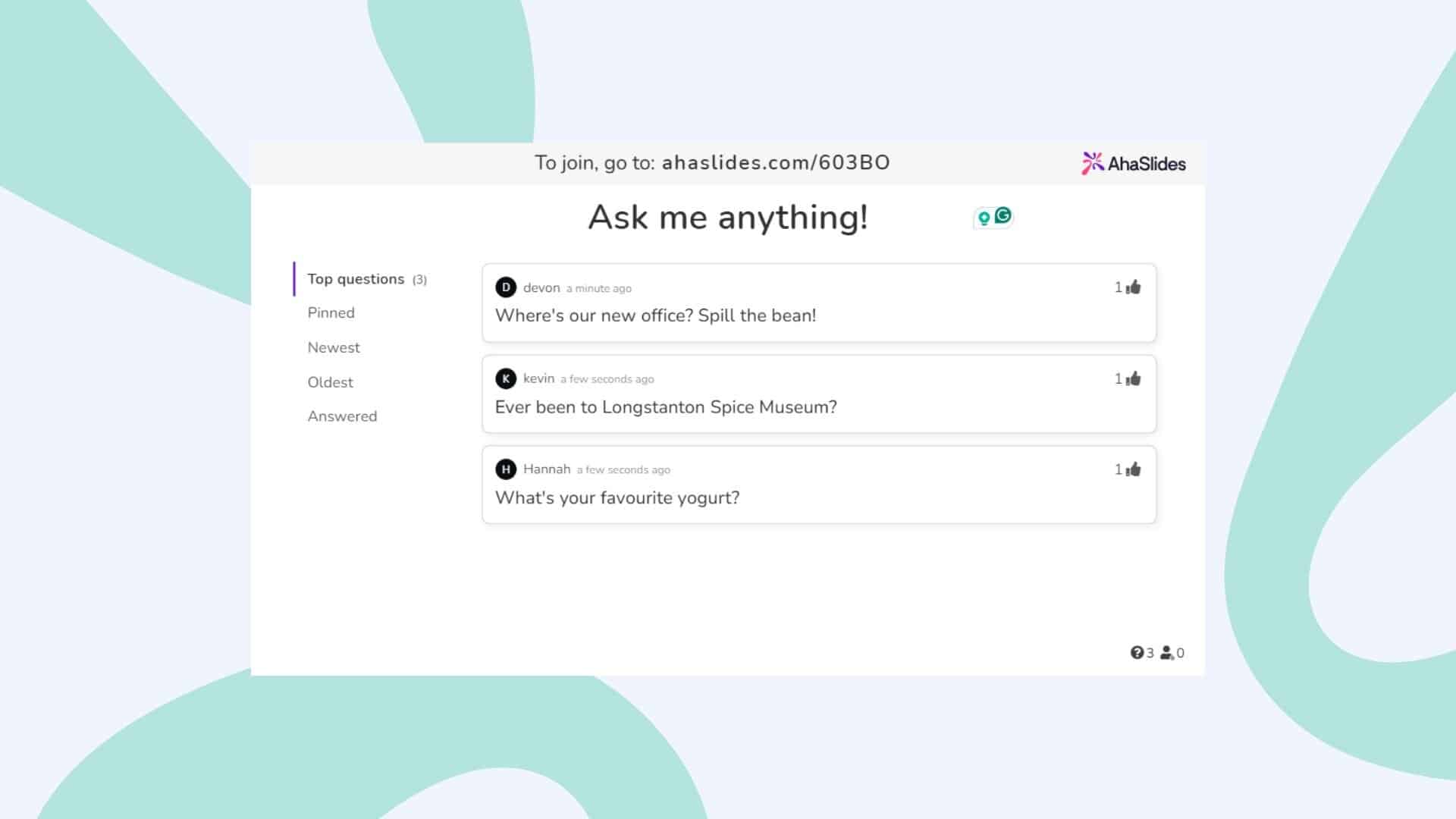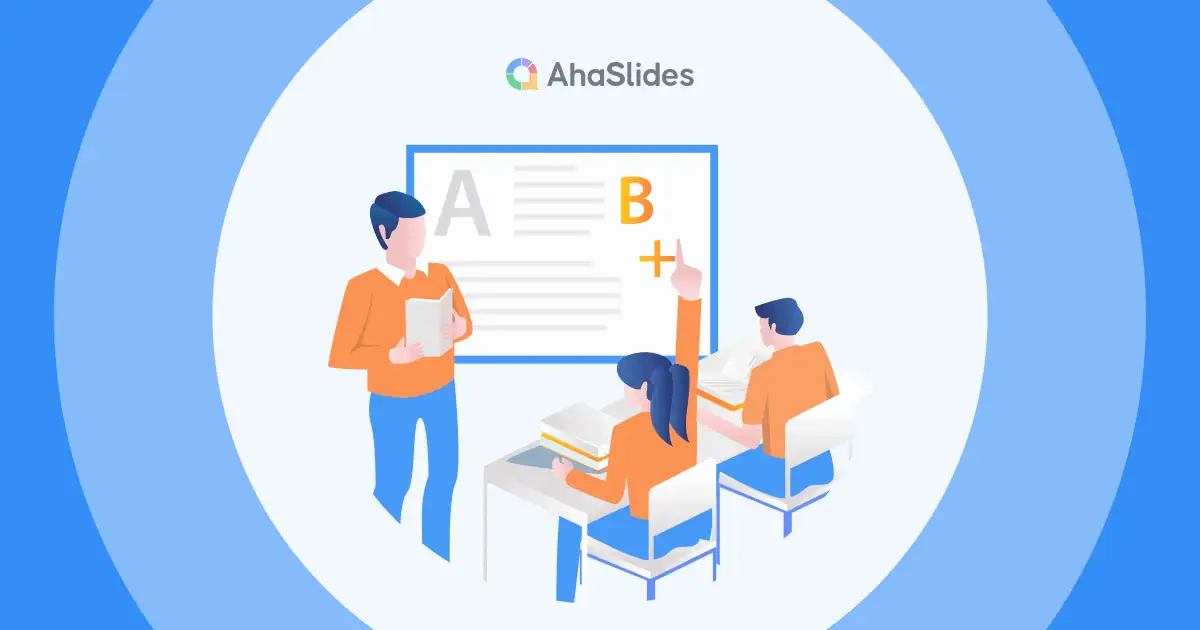Teaching can be tough. When teachers first started, they often had no clear classroom management strategies to control a classroom of twenty or more energetic students with different characteristics. Would they listen and learn? Or would each day be chaos?
We have directly spoken with teachers with long-standing careers and expertise in the field, and excited to share some of these tried-and-true tactics that provide you with practical solutions to common management hurdles.
We hope these tips help you in your important work with kids!
Table of Contents

Effective Classroom Management Strategies For New Teachers
1/ Interactive Classroom Activities
Instead of students passively absorbing knowledge with traditional teaching methods, the "Interactive Classroom" method has changed the situation.
Nowadays, in this new classroom model, students will be at the centre, and teachers will be in charge of teaching, guiding, directing, and assisting. Teachers will reinforce and enhance lessons through interactive classroom activities with multimedia lectures with engaging, fun content that makes it easy for students to interact. Students can actively participate in lessons with activities such as:
- Jigsaw learning
- Quizzes
- Role-play
- Debates
2/ Innovative Teaching
Innovative teaching is one that adapts content to learners' abilities.
It helps students promote creativity and develops skills including self-research, problem-solving and critical thinking skills, soft skills, and self-assessment.
In particular, these innovative teaching methods also make the class a lot more alive by:
- Use the design-thinking process
- Use virtual reality technology
- Use AI in education
- Blended learning
- Project-based learning
- Inquiry-based learning
These are the methods you don't want to miss!

3/ Managing Classroom
Whether you are a new teacher or have years of experience, classroom management skills will help you run your classroom smoothly and create a positive learning environment for your students.
You can practice classroom management skills with key points around:
- Create a happy classroom
- Capture students' attention
- No more noisy classroom
- Positive discipline
4/ Teaching Soft Skills
In addition to transcripts, certificates, and academic achievements, what helps students truly become "adults" and cope with life after school are soft skills.
They don't just help students cope better with crises, but also help to improve listening skills, leading to care, empathy, and a better understanding of situations and people.
To teach soft skills effectively, there can be the following ways:
- Group projects and teamwork
- Learning and assessment
- Experimental learning techniques
- Note-taking and self-reflections
- Peer review
When equipped with soft skills early and fully, students will easily adapt and integrate better. So it will be much easier to manage your class.

5/ Formative Assessment Activities
In a balanced rating system, both formative and summative assessments are critical in gathering information. If you rely too much on either assessment form, the status of tracking student learning will become ambiguous and inaccurate.
When applied to practice in the classroom, Formative assessment activities provide information for teachers to easily adjust teaching to suit the students' acquisition pace quickly. These minor adjustments help students achieve their learning goals and acquire knowledge most effectively.
Here are some Formative Assessment Activities ideas:
- Quizzes and games
- Interactive classroom activities
- Discussion and debate
- Live polls and surveys
Behaviour Management Strategies In The Classroom
1/ Behaviour Management Strategies
Teachers play a much bigger role than just teaching subjects. With the time teachers spend with students in the classroom, teachers are a model for students to follow, helping them regulate emotions and manage behaviour. This is why teachers need to prepare behaviour management strategies.
Behaviour management strategies will help you master your classroom and work with your students to achieve a healthy and stress-free learning environment. Some of the techniques mentioned are:
- Set classroom rules with students
- Limited time for activities
- Stop the mess with a little humour
- Innovative teaching methods
- Turn “punishment” into “reward"
- Three steps of sharing
It can be said that the success of a class depends on many factors, but the fundamental element is behaviour management.

2/ Classroom Management Plan
Along with behaviour management strategies, creating a classroom management plan will help teachers build a healthier learning environment and hold students accountable for their behaviour. A classroom management plan will provide benefits such as:
- Create quality lessons to help students absorb knowledge better.
- Students get used to rewarding and reinforcing good behaviour in the classroom and significantly reducing bad behaviour.
- Students also have autonomy in making their own decisions.
- Students and teachers will understand and adhere to the boundaries of each.
In addition, some steps to develop a classroom management plan include:
- Set up the classroom rules
- Set boundaries between teachers and students
- Use verbal and non-verbal communication
- Reach out to parents
Preparing a classroom management plan in conjunction with the family will create the ideal environment to help limit and address unacceptable student behaviour in the classroom, thereby motivating students to develop their potential.
Fun Classroom Management Strategies
1/ Student Classroom Engagement
Keeping students engaged throughout the lesson is an excellent classroom management strategy. In particular, it is a great motivator for your students to come to class and for you when preparing each new lesson.
Some ways to increase student classroom engagement include:
- Use student opinion
- Get 'em talking
- Breed competition with a quiz
- Set up Q&A checkpoints
These techniques will help you spark your students' innate curiosity to learn, as well as make learning time more enjoyable.

2/ Online Learning Student Engagement
Online learning is no longer a nightmare for teachers and students with online student engagement techniques.
Instead of boring virtual presentations full of theory, students are distracted by the sound of the TV, a dog, or just... feeling sleepy. Some tips to improve engagement during a virtual lesson can be mentioned as follows:
- Classroom quizzes
- Games & activities
- Flipped role presentations
- Collaborative tasks for students
These will undoubtedly be the best virtual classroom management strategies.
3/ Flipped Classroom
Teaching has grown and changed so much that traditional methods have now given way to interactive classroom activities taking centre stage. And flipped classroom is the most interesting learning method because it brings the following benefits:
- Students develop independent learning skills
- Teachers can create more engaging lessons
- The students learn at their own pace and in their own ways
- Students can build a more profound understanding
- Teachers can provide a more tailored approach
Tools for the Classroom
In recent years, traditional teaching and learning methods have become increasingly unsuitable for the 4.0 technology era. Now teaching is completely renewed with the help of technology tools to create a dynamic, developing, and highly interactive learning environment for students.
1/ Classroom Response Systems
A classroom response system (CRS) is straightforward to build and essential in modern classrooms. With a smartphone, students can participate in audio and visual multimedia polls, present brainstorming and word clouds, play live quizzes, etc.
With a classroom response system, teachers can:
- Store data on any of the free online classroom feedback systems.
- Increase student engagement through interactive activities.
- Improve both online and offline learning experiences.
- Assess student understanding and attendance check.
- Give and grade assignments in class.
Some popular classroom response systems are AhaSlides, Poll Everywhere, and iClicker.
2/ Google Classroom
Google Classroom is one of the most popular learning management systems (LMS).
However, the system will be difficult to use if the teacher is not too tech-savvy. It also has limitations such as difficulty integrating with other applications, no automated quizzes or tests, lack of advanced LMS features with a limited level of age, and violation of privacy.
But don't worry because Google Classroom is not the only solution. There are many Google Classroom alternatives on the market, with tons of advanced features for learning management systems.
Key Takeaways
There are many different classroom management strategies out there. However, to find out what works with your class and students, there is no other way but to be patient, creative, and listen to the needs of your students each day. You can also incorporate the classroom management strategies that AhaSlides outlined above into a "secret" of your own.
And especially, don't forget about the advantages technology brings to teachers today; tons of educational tools are waiting for you to use!
Frequently Asked Questions
What are the big 8 classroom management strategies?
From the book Class Acts, you will learn these big 8 classroom management strategies, which are: Expectations, Cueing, Tasking, Attention Prompts, Signals, Voice, Time Limits, and Proximity.
What are the 4 classroom management styles?
The four main classroom management styles are:
1. Authoritarian - Strict adherence to rules with little room for input from students. Emphasises obedience and compliance.
2. Permissive - Few rules and boundaries are set. Students have lots of freedom and flexibility. Emphasis is on being liked by students.
3. Indulgent - High instructor interaction with students but little classroom discipline. Little expectation is set on the students.
4. Democratic - Rules and responsibilities are discussed collaboratively. Student input is valued. Emphasises respect, participation, and compromise.








